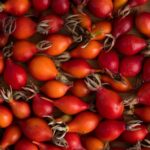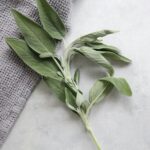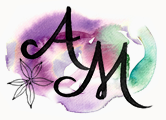Herbal Tea
Herbal Tea – Not actually Tea!
I love a good cup of tea (and coffee too). I also love herbal tea – it’s a great way of keeping hydrated and relaxing, while at the same time applying some of the healing properties of herbs. Did you know that herbal tea isn’t actually tea?
Tea is made from the bush of Camellia sinensis, and all proper teas such as black, green and white teas come from this plant. Herbal teas are actually infusions, and are properly called tisanes. Tisanes are made from mixtures of dried leaves, seeds, grasses, nuts, barks, fruits, flowers, or other botanical elements that give them their taste and provide the benefits of herbal teas. They are usually all caffeine free and therefore will hydrate you, so they can be counted in your 2L of water each day.
There are a huge range of herbal teas available, some of which contain a blend of normal tea with other herbs/spices and some are completely free from tea. It can be a bit overwhelming knowing which tea is best for you, so I’ll go through some varieties in this article.
TEA
Black Tea
Black tea is generally stronger in flavor and contains more caffeine than the less oxidized teas (green, white and yellow). Below are some common variations of the Black tea, all made from the Camellia sinensis bush, but produced in different ways.
– Assam tea is found in most “breakfast” teas such as English breakfast and Irish breakfast. It is named Assam after its region of production in India.
– Earl Grey has added Bergamot oil (Bergamot is extracted from the rind of the Bergamot Orange)
– Lapsang souchong is from China, and is traditionally smoked.
– Oolong tea is also from China, and it is produced by being withered under the sun, and then the leaves are curled and twisted.
White Tea
White tea is unfermented and is made from the very new and young leaves of the Camellia sinensis plant. White tea contains a higher concentration of polyphenols (constituents responsible for the antioxidant activity of tea) and thus has greater free radical scavenging activity compared to Green and black tea. It is also the least processed tea available
Green Tea
Green tea is unfermented, and is made by heat treating the leaves soon after they are harvested. Green tea will usually only keep for a year. It is rich in polyphenols and so has many healthy properties. There is a lot of research on green tea, and some of its properties include an ability to help protect against heart disease, cancer and it also very slightly helps to boost metabolism.
Yellow Tea
Yellow tea is similar to green tea, however it has a less ‘grassy’ flavour. During the process that leads to the tea leaves becoming yellow tea, the chlorophyll is broken down and partly oxidized. The taste of the tea becomes milder, and is often described as being somewhere between white tea and green tea. The aroma is described as flowery, fresh and mild. There is little known about this properties of this tea, but it is possible that some of the benefits are lost in its processing.
TISANES
There are huge varieties of Tisanes available, so I’m going to go through some of the more popular options, what they’re good for and how to prepare them.
Note – we all know now that herbal teas are technically called tisanes, however I will still be using the term tea through this article.
YEP.
This is something everyone should have in their cupboard. YEP tea is a classic tea formula which contains Yarrow, Elderflower and Peppermint. The actions of these herbs are great for helping the body deal with fevers, which allow the body to burn out the bugs from our system.
Pour a cup of boiling water onto 1-2 heaped teaspoonfuls of the dried herbs and infuse for 10 minutes. Drink 6-8 cups at the start of an infection.
Chamomile

One of my favourite herbs. It has an excellent calming action, and can be drunk for anxiety and insomnia. It also helps with digestive problems as it reduces inflammation in the intestines. It can also be used as a wash for sore inflamed eyes.
2 tsp dried leaves in a cup of boiling water, infuse for 5-10 minutes. For digestive problems, drink after each meal.
Peppermint
Peppermint is a great herb for relaxing the stomach. The essential oils contained in the herb can reduce colic, flatulence and nausea. It is also great for fevers (it’s in the YEP tea).
Pour a cup of boiling water onto a heaped teaspoonful of the dried herb and infuse for 10 minutes. Drink as often as desired.
Raspberry Leaf
Raspberry leaves have a long tradition of use in pregnancy to strengthen and tone the tissue of the womb. Taking this tea regularly in pregnancy and during labour can help with contractions and reduces haemorrhages during labour.
Pour a cup of boiling water onto 2 teaspoonfuls of the dried herb and let infuse for 10-15 minutes. This may be drunk freely.
Rose

Rose tea is made from the petals of the rose flower, and it is usually added for its scent and flavour. It reportedly contains vitamin C, however this is usually due to the confusion between rose petals and rose hips. It combines well with black tea.
Pour a cup of boiling water onto 2 teaspoonfuls of the dried herb and let infuse for 10 minutes. Alternatively, simmer 1/3 cup fresh rose petals in 1 cup of water for 5 minutes or until the petals become discoloured. Add honey to taste.
Rose Hip

Rose hip is made from the fruit and seeds of the Dog Rose (Rosa canina) which are collected in the autumn. It is rich in vitamin C and so is great for warding off colds and infections. It can also be drunk to improve energy and relieve constipation.
This must be made as a decoction. Put 2½ teaspoonfuls of the cut hips in a cup of water, bring to the boil and simmer gently for ten minutes.
Ginger
This is another great herb for fevers and calming the stomach. Ginger can promote perspiration making it good for fevers. It also stimulates the peripheral circulation, making it a good herb for bad circulation and chilblains. Nausea of morning sickness and motion sickness can be relieved by taking ginger.
Pour a cup of boiling water onto 1 teaspoonful of roughly chopped fresh root and let it infuse for 10 minutes. Drink whenever needed.
Fennel
Fennel is another great herb for the stomach and intestines. It can be taken to relieve flatulence and colic if taken before meals. It is also good for coughs as it calms the lungs and helps the expulsion of mucous. It can also be taken by nursing mothers to increase the flow of breast milk.
Pour a cup of boiling water onto 1-2 teaspoonfuls of slightly crushed seeds and leave to infuse for 10 minutes. Drink three times daily.
Lemon Balm
Lemon Balm is a great herb to drink to help you relax. It can also settle the stomach, making it especially good for nervous indigestion. Lemon Balm is lovely for kids and can be combined with chamomile for upset tummies, nerves and even teething. The little hairs on the leaves contain an essential oil that is strongly anti-viral, but this evaporates if the leaves are roughly handled so it can only be relied on in fresh herbs. Lemon Balm is part of the mint family so it tastes yummy, and it is also very easy to grow.
Pour a cup of boiling water onto 1 teaspoonful of the dried herb or 1½ tablespoons of fresh herb and let infuse for 10 minutes.
Lemon Grass
Lemon grass tea is a very refreshing, citrus flavoured drink. You can make the tea from the dried variety which is usually from the white ends. If you grow lemon grass yourself (it’s easy to grow, but keep it in a pot as it grows rampant) then you can use the fresh green leaves as well. One of the ingredients of lemongrass, citral, has been shown to have anti-cancer properties. It is also considered to be of benefit for insomnia, and to relieve chest infections.
For the fresh tea use 10 leaves, cut up into 2 to 3 inches. Avoid using the outer leaves as these may make the tea bitter. Wash them well and boil them in a litre of water for 10-20 minutes.
Thyme
Sluggish digestion and upset tummies can be helped with thyme. The essential oils in thyme are strongly antiseptic, so it’s good for respiratory and digestive infections. It’s a fantastic cough remedy because of its antiseptic and expectorant properties.
Pour a cup of boiling water onto 2 teaspoonfuls of the dried herb and let infuse for 10 minutes.
Sage

Sage is a classic remedy for inflammation of the mouth and throat. It can help with mouth ulcers, gingivitis, laryngitis and tonsillitis. It can also help to reduce sweating. It should be avoided during pregnancy.
Add ginger, thyme and Manuka honey to sage tea for an awesome sore throat tea.
Pour a cup of boiling water onto 1-2 teaspoonfuls of the leaves and let it infuse for 10 minutes. Drink three times daily.
 Rooibos
Rooibos
Pronounced roy-boss, and also known as red tea, Rooibos has a sweet and nutty flavour. It is believed that rooibos tea has 50% more antioxidants than green tea, and it also rich in vitamin c. It is caffeine free and is great drink to help you relax. This is readily available in teabags.
Pour a cup of boiling water onto a rooibos teabag and let it infuse for at least 10 minutes. Drink freely.
Yerba mate
 Yerba mate (pronounced sherba-mah-tay) is rich in nutrients, amino acids and fatty acids, and is often drunk as an ‘energy drink’. It is traditionally drunk by South Americans in a hollowed out gourd, but due to its rise in popularity it is now becoming available in a few varieties such as mate latte or yerba cocoa. Yerba mate contains caffeine, but is often better tolerated than coffee.
Yerba mate (pronounced sherba-mah-tay) is rich in nutrients, amino acids and fatty acids, and is often drunk as an ‘energy drink’. It is traditionally drunk by South Americans in a hollowed out gourd, but due to its rise in popularity it is now becoming available in a few varieties such as mate latte or yerba cocoa. Yerba mate contains caffeine, but is often better tolerated than coffee.
Yerba mate tea is available as tea bags, but the traditional method of brewing is to fill the mate cup to about ¾ of its capacity with yerba mate tea. The mate cup is then filled with hot water which the yerba mate tea leaves absorb. More water is added until the leaves are completely saturated.
There are many variations on this recipe. Sometimes milk and sugar are added. The tea can be replenished with hot water as many times as desired until there is no more flavour.
Tisanes vs. tinctures
Herbs have a complex array of different active constituents which determine their effects on the body. The different structures of these constituents call for various methods of extraction. Some constituents are best extracted with water and others with alcohol. Active constituents which are potentially dangerous are usually those which are alcohol soluble, meaning that teas are usually safe to self-prescribe (pregnancy is an exception). Herbal tinctures (such as the formulas I make) are usually extracted with a combination of water and alcohol, the ratio of which is carefully determined to obtain the greatest efficacy. These should only be prescribed by a trained herbalist or naturopath.










